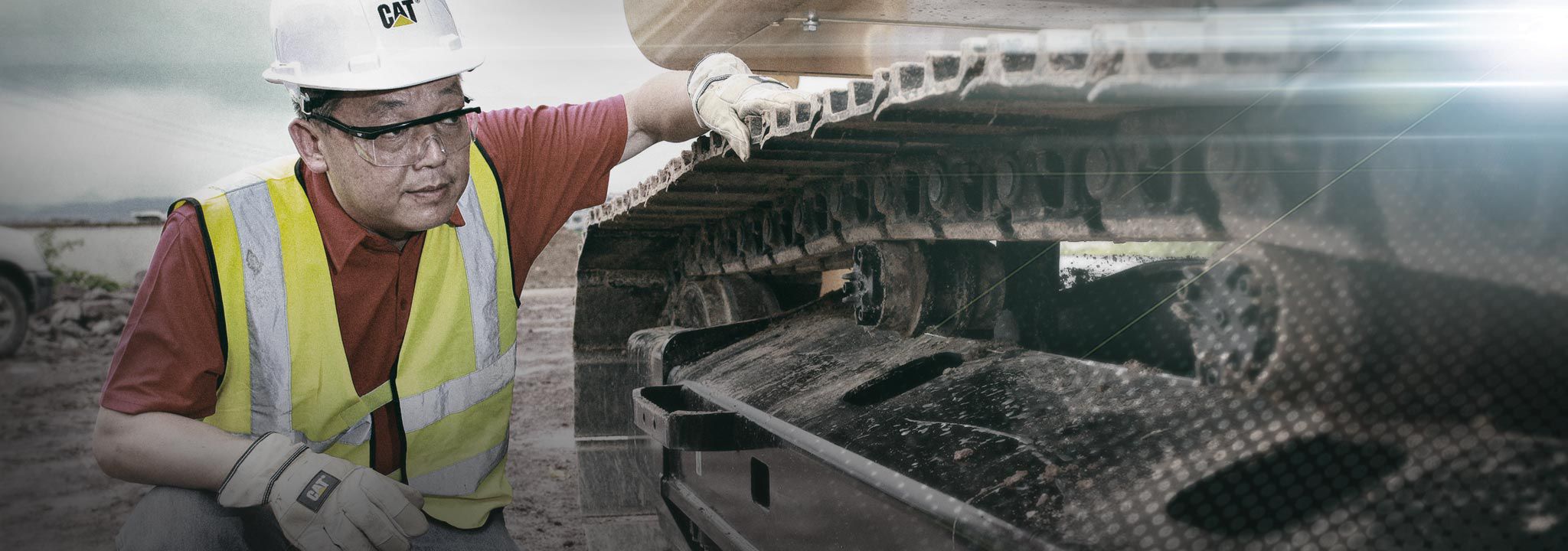3 AREAS YOU DON’T WANT TO OVERLOOK
In a busy landfill, transfer station or material recovery facility, no one wants to sacrifice machine availability for maintenance. We get it—production matters, and you’ve got deadlines and financial goals to meet. But try looking at it another way: Instead of sacrificing availability for maintenance, you’re ensuring availability through maintenance.
Operations managers who have put the focus on these three basic maintenance practices tell us they’re reaping the bottom-line benefits in terms of eliminating excessive wear and maximizing machine and component life.
1. Performing daily walkarounds
This one’s easy to overlook in the rush of shift changes or busy work days. But daily equipment walkarounds may be the single best way to identify potential problems before they turn into costly repairs and downtime. That’s because your operators know their machines better than anyone and, if they’re paying attention, are likely to notice when something feels “off.”
Make pre- and post-shift walkarounds a requirement. Encourage your operators to perform a quick visual inspection anytime they’re off the equipment. And remind them to use their senses—sight, smell, sound and touch—to reveal clues about a machine’s status.
Need help making the process faster and easier? Download the free Cat® Inspect app. It puts all the tools you need to conduct accurate, efficient walkarounds right on your phone.
2. Completing regular maintenance on time
Oil and filter changes. Fluid sampling. Periodic inspections of undercarriage or wheels and tips. They’re all things you know you should do on a regular schedule. But again, the pressures of the job can make it tempting to put off these tasks. Don’t fall victim to that way of thinking.
Extending maintenance intervals puts component life at risk, impairs machine performance and raises service costs—all of which hurt your bottom line. It costs a lot less to shut down a machine for a few hours of regular maintenance than to have it in the shop for days or weeks following an otherwise preventable breakdown.
To keep maintenance on track, take advantage of technology. The Product Link™ “box” on your machines sends hours and event/diagnostic codes to VisionLink®, where you can schedule and monitor PM activities automatically anytime you’re online. Watch the video for a high-level look, then talk to your Cat® dealer to make sure your Product Link is “turned on.”
3. Training personnel to know what to look for
Finally, don’t overlook the importance of training when it comes to keeping your equipment operating at peak performance. Your operators need to know how to run machines right, of course, but they also need to recognize when something is wrong. That requires:
• A basic understanding of how machine systems work and wear
• The ability to conduct a proper walkaround inspection
• Knowing the different levels of machine warnings and how to respond
A well-trained operator is your best line of defense against expensive repairs and downtime, and that makes the investment in training well worth the upfront cost. Check out the options available—you’ll find in-person and online classes that fit into your schedule.
When it comes to maintenance, the old adage is true: “Pay me now or pay me later.” Spend a little time and money upfront and you’re likely to see big savings down the road. And remember, if you need help establishing a maintenance plan, putting your technology to work or accessing training, we’re here to help. Talk with your Cat dealer to get started.

